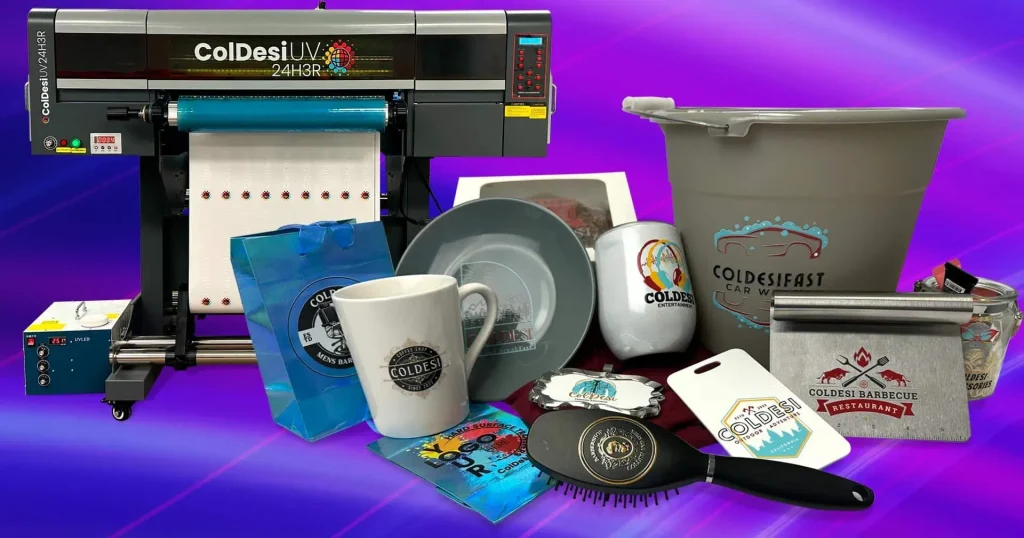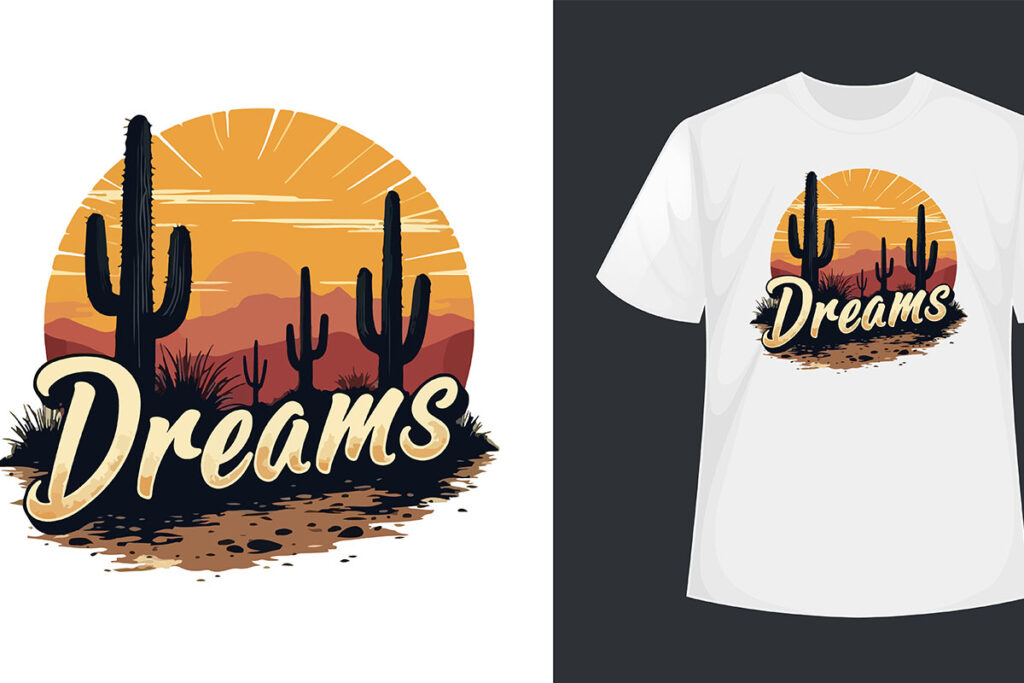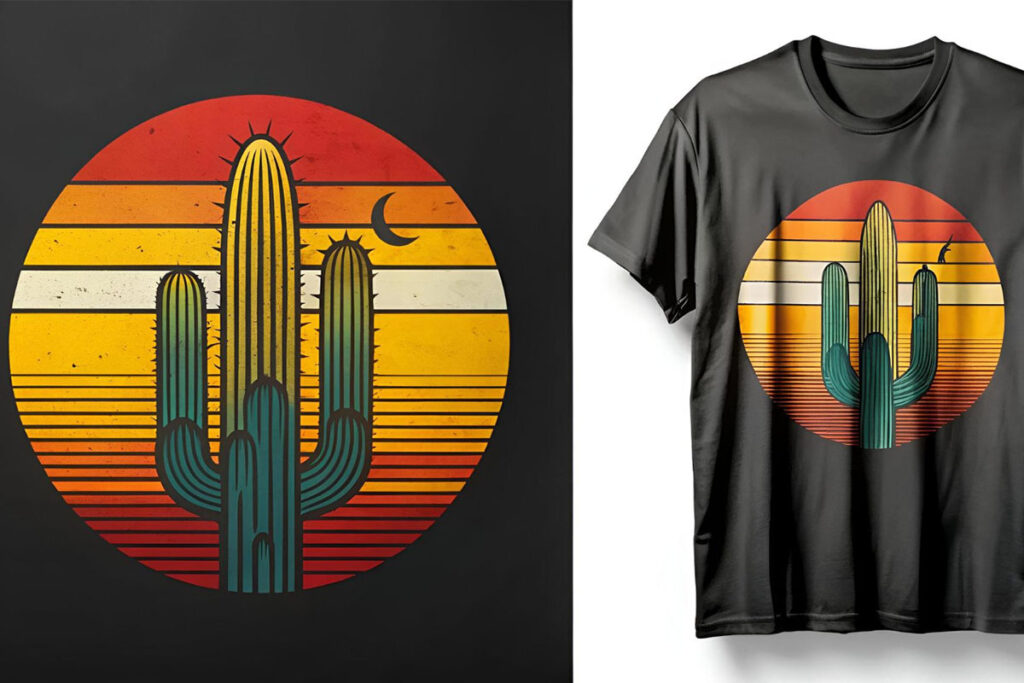UV DTF printing, or ultraviolet direct-to-film printing, is revolutionizing the fabric printing landscape and emerging as an essential technology in the textile industry. This innovative technique combines the capabilities of UV printing technology with the efficiency of direct-to-film printing, producing vibrant fabric designs that elevate custom textile printing to new heights. As designers and manufacturers embrace the precision and durability of UV DTF, they are also drawn to its sustainable fabric printing benefits, which align with modern environmental sensibilities. Unlike traditional methods, UV DTF minimizes material waste and offers exceptional adhesion on various fabrics, resulting in prints that resist fading and wear. With its increasing popularity, we will explore the advancements, applications, and advantages of UV DTF printing in detail.
Direct-to-film printing with ultraviolet curing, often known as UV DTF, represents a cutting-edge approach to fabric decoration that marries speed with quality. This technique leverages ultraviolet light to cure inks, allowing for impressive design fidelity and long-lasting results across diverse textile surfaces. As sustainable practices gain traction, this printing method stands out for its eco-friendly attributes, offering brands a path to minimize waste and emissions. Moreover, the flexibility of UV DTF printing opens doors to vibrant and customized designs, meeting the growing consumer preferences for personalized textile options. In this context, understanding the nuances of this innovative printing technology is crucial for anyone looking to stay ahead in the competitive world of textile manufacturing.
Understanding UV DTF Printing Technology
UV DTF printing, or ultraviolet direct-to-film printing, is an innovative technique that has revolutionized the fabric printing process. This technology combines the best features of traditional screen printing and digital printing, providing an efficient method to transfer vivid designs onto fabrics. The process begins with printing a desired design onto a special film, which is then coated with UV-reactive inks. Once the ink printed on the film is exposed to ultraviolet light, it cures almost instantaneously, ensuring a strong and durable bond with the fabric underneath.
One of the defining characteristics of UV DTF printing is its adaptability; the technology can accommodate a wide range of materials, from cotton to synthetic blends. This adaptability, coupled with its fast curing process, reduces production times significantly compared to conventional methods. Additionally, UV DTF printing is becoming increasingly popular due to its capacity for producing vibrant, high-resolution images that meet the demands of both consumers seeking personalization and brands aiming for excellence in product quality.
Environmental Benefits of UV DTF Printing
The environmental implications of UV DTF printing are worth highlighting, particularly in an era where sustainable practices are paramount for consumers and businesses alike. Unlike traditional printing methods that often use solvent-based inks, UV DTF employs UV-curable inks that are less harmful to the environment. This significant reduction in harmful emissions not only adheres to stricter environmental regulations but also aligns with the overall trend towards eco-conscious manufacturing processes.
Moreover, the efficiency of UV DTF printing leads to minimal waste generation. As the inks cure quickly under UV light, there is less chance of spillage or excess ink usage, which is a common challenge in conventional printing practices. Brands that adopt UV DTF technology can thus enhance their sustainability narratives, appealing to environmentally aware consumers who prioritize green choices in fabric printing.
Recent Advancements in UV DTF Technology
As we progress through 2025, noteworthy advancements in UV DTF technology continue to emerge, enhancing its appeal and functionality. New ink formulations are being developed that not only provide a broader color gamut but also improve adhesion to diverse fabric types. High-quality pigments are now available, allowing printers to create even more striking and detailed designs. This progression significantly impacts the ability of businesses to meet the custom textile printing demands of their clients.
Additionally, the speed of the curing process has seen considerable improvements owing to enhanced UV light technologies. This means that businesses can now offer faster turnaround times for custom orders without compromising on quality. These advancements catalyze a shift in the market, leading to a growing demand for UV DTF printing as companies look to provide vibrant fabric designs at an unprecedented pace.
Market Trends and the Demand for Custom Textile Printing
There’s a palpable shift in consumer behavior towards personalization, leading to an upsurge in demand for custom textile printing solutions. The rise of UV DTF printing technology plays a crucial role in fulfilling this demand, as it allows for rapid production of unique, tailored items. From personalized clothing to distinct home decor elements, UV DTF meets the needs of consumers who seek individuality in their purchases.
Market trends indicate that businesses leveraging UV DTF technology can tap into diverse segments, including sportswear, fashion, and promotional products. As the industry continues to embrace customization, companies that invest in UV DTF systems will likely position themselves ahead of competitors, capturing market share through quality and personalization strategies. With its capability to produce high-quality, vibrant designs on-demand, UV DTF stands at the forefront of a fundamental shift in consumer textile preferences.
Versatility of UV DTF Applications
UV DTF printing is not just limited to fabric used in clothing; its versatility extends across multiple sectors. This technology is increasingly being applied in home decor, where custom designs can transform curtains, cushions, and wall art into unique statements. Furthermore, the sports industry is harnessing UV DTF to create bespoke jerseys and merchandise that appeal to individual athletes and teams alike.
The adaptability of UV DTF printing further allows it to cater to promotional and branding needs, where businesses can create custom printed items that reflect their brand’s personality. From tote bags to banners, the possibilities are virtually endless. This technology’s capability to deliver high-quality prints quickly makes it an invaluable asset not only to the fashion industry but also to any sector requiring vibrant fabric design.
Challenges in Adopting UV DTF Technology
While the advantages of adopting UV DTF printing are significant, businesses may face certain challenges during implementation. One major hurdle is the initial investment in specialized equipment and technology, which may be perceived as a barrier for smaller companies. The cost of UV DTF printers and the necessary training for operators can present financial challenges that some businesses are hesitant to tackle.
However, as technology evolves and market demand increases, these costs are gradually expected to decrease, making UV DTF more accessible to small and medium enterprises. Investing in UV DTF technology not only promises long-term savings by enhancing production efficiency but also positions companies to offer superior, eco-friendly products that resonate with today’s consumers.
Frequently Asked Questions
What is the process involved in UV DTF printing?
UV DTF printing is a specialized method that prints designs onto a film which is cured using ultraviolet light before being transferred onto fabrics. This process ensures quick drying times and strong adhesion, resulting in vibrant fabric designs that resist fading and washing.
How does UV DTF printing contribute to sustainable fabric printing?
UV DTF printing contributes to sustainable fabric printing by reducing material waste and eliminating the need for harmful solvents during the curing process. This eco-friendly approach aligns with consumer demand for responsibly produced textiles.
What are the benefits of UV DTF compared to traditional printing methods?
Compared to traditional printing methods, UV DTF offers high-quality, vibrant prints with enhanced durability and resistance to wear. It also allows for rapid production and customization, meeting the growing demand for personalized textile solutions.
Can UV DTF printing be used on different types of fabrics?
Yes, UV DTF printing is versatile and can be applied to a variety of fabrics including cotton, polyester, and blends. The advanced ink formulations used in UV DTF technology ensure that designs adhere well and maintain vibrancy on different textile surfaces.
What advancements are being made in UV DTF technology?
Recent advancements in UV DTF technology include innovative ink formulations that improve vibrancy and durability, as well as enhanced curing processes that lower emissions, contributing to more environmentally friendly printing practices.
What industries benefit from UV DTF printing applications?
UV DTF printing has a broad range of applications across various industries, including custom textile printing for fashion, home décor, promotional items, and sportswear. Its adaptability makes it an essential technology in modern fabric decoration.
| Key Point | Description |
|---|---|
| What is UV DTF Printing? | A process involving printing designs onto a film, then transferring it to fabrics using UV light for curing. |
| Recent Developments | Innovations in ink formulations, greater environmental considerations, and adaptation to market trends for on-demand printing. |
| Applications | Spanning beyond clothing to home decor, sportswear, and promotional items, showcasing versatility across sectors. |
| Benefits | Offers high-quality, durable, eco-friendly prints with rapid production capabilities, appealing to consumer demands. |
| Challenges | High initial investment and need for specialized training, which may hinder some businesses from adopting the technology. |
Summary
UV DTF printing is revolutionizing the fabric decoration industry with its innovative technology. Embracing this method allows businesses to meet the growing demand for vibrant, high-quality prints while being mindful of environmental impacts. The advancements in UV DTF, including durable ink formulations and reduced emissions, position this printing technique as a leader in sustainable practices. As more sectors realize its potential—ranging from fashion to home decor—UV DTF printing will continue to evolve, providing exciting opportunities for brands aiming to enhance their product offerings and meet consumer expectations.



